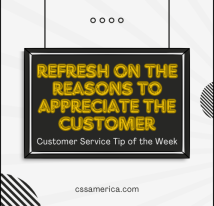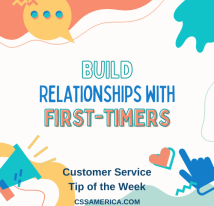“I want to talk to your supervisor.”
That’s their opening salvo. Before you can hardly finish your greeting, the customer is asking for your boss. This is done by a customer who has tried to get an issue resolved, and it hasn’t worked, so they want to go to somebody with more authority. Also, some customers just immediately go to the supervisor and don’t even give the employee the chance to address the need.
Why Pause before You Transfer
Before you do the immediate handoff, we suggest that you go through a couple quick steps. Why? Because you may be able to help this person. You could save the customer time by them not having to leave a voicemail for someone who is unavailable at that moment. You could save them the hassle of being transferred or having to talk to multiple additional people. And you could save your co-workers the time of having to deal with something that may be unnecessary to run by them, particularly if there’s little information shared on the situation.
What Process to Use
Here’s how to handle these situations:
- Assure the customer that you want to help and you can help, whether that help means getting them to the supervisor or the person over that particular area. Let them know that you’re wanting to help, and you’re happy to set up that conversation.
- Clarify the situation. Ask them: Just to make sure I understand the situation… or To make sure I send you to the right person… or To ensure you get your need addressed in the best way possible… Then ask for a few details. By clarifying the situation, you’re determining if you can help, you’re confirming to whom to send the customer, and you’re enabling yourself to provide background information to the supervisor.
- Offer to address the need yourself, if possible. This could result in your actually fixing the issue or providing the information. It could involve your acting on their behalf to engage the supervisor and get back to the customer.
- Take the Next Step. This is when you let them know what you’re about to do next and when you’re going to do it, whether it is resolving the issue, operating on their behalf, or going ahead and connecting them with the person to best meet their needs.
When they want to talk to your supervisor, Assure, Clarify, Offer, and Take the Next Step to make sure that issues get addressed in the best manner possible for the customer, the co-worker, and the company.
Signup for FREE Tips! Contact Us More Resources for You Visit Our Home Page
























